Introduction
If we think of music reproduction, 90% of the whole information in a piece of music, even more with spoken words, takes place in the audio midband. As we were young dance club visitors the most important thing in sound reproduction was bass – more bass equals better reproduction and greater fun – we had to feel the energy right in our chest. With getting a little bit older, things changed and today I cannot stand 10min of reproduced sound, if something in the midband sounds wrong or coloured.
Where everything began

The best example of the human capability to hear the slightest variations in the midband of the audio spectrum is the voice. If we have our girlfriend on the phone, we can hear in less than 3 seconds in which emotional state she is, and we can also identify a known voice after seconds, even if we haven´t spoken to that person for years . In this example we are using a telephone not a high end audio system – just a simple telephone. The ability to remember the character of different voices we once heard and to recognize even the smallest nuances in them is frightening. If we think about the evolution of us human beings, the ability to listen at such a high level, has something to do with our existence on planet earth, and the sound of our mothers voice was familiar to us a long time before we were born.
The Goal
Thinking about serious sound reproduction means to deal with the midband. And dealing with the midband is much more complicated than with bass or the treble. Do not misunderstand me – bass and treble are also complex in their own way – but the diversity of the midband, the amazing amount of different shades and the ability to detect them, makes us to real “midband gourmets”. To get more information about the hearing of the human ear, we have to look at the findings of Fletcher-Munson, who manifested in 1933 the famous curves, in which we will see how loudness levels and the ability of our ear to her different frequencies is described. If we take this curves as a fact, we have to get the highest quality in that frequency range in our sound reproduction system we can afford – and – to tell you the truth – it is not cheap nor is it easy to achieve that.
The Midband
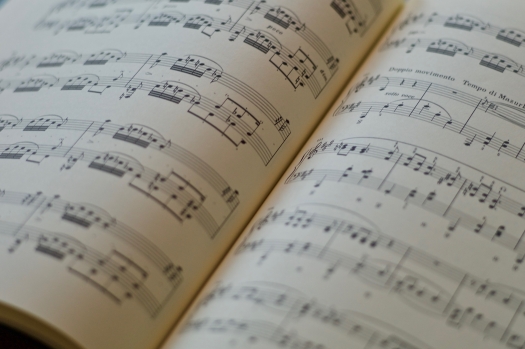
One ticket to heaven in the difficult midband area is a very good tube amplification system. That does not imply that transistor technology is not able to reach an outstanding quality in this regard, but to get there via a transistor driven amplifier or preamplifier will be even more expensive than with a tube amplifier.
But a tube amplifier needs tubes – and there the whole story begins to turn. Today we face a growing number of tube suppliers mostly located in russia and china, which give us the most common types of our so urgently needed glass – but how good is the sound of these brad new constructions? If I put brad new JJ or Electro Harmonix tubes in all 12AX7 positions in my preamplifier, the sound gets more of that specific colour I will find in a cheap transistor preamplifier – sometimes even worse that that. Gone is the complexity of the midband, gone is its smoothness and the grain free gestalt, what I get is a sparkling treble and a nice sounding full bodied bass, but the midband is flat and lifeless, with a clear cut in that frequency range. In other words, if someone will steal all the great old tubes from my stach – I would by tomorrow a very nice and expensive transistor preamplifier – and get rid of all the tube procurement, all the tube rolling, the fine matching to the amplifier – and at the end I would probably save some money too. I cannot tell you, why it is not possible in 2018 with all the computer technology, the materials we have today and the indsutrial possibilities to make tubes with the same sound quality it was the standard in the 30ties, 40ties, 50ties and 60ties of the last century. Maybe computers and all the modern technology we have today are able to create the newest I phone – but are useless to built a tube like the Telefunken ECC83 – who knows.
Meeting a Legend
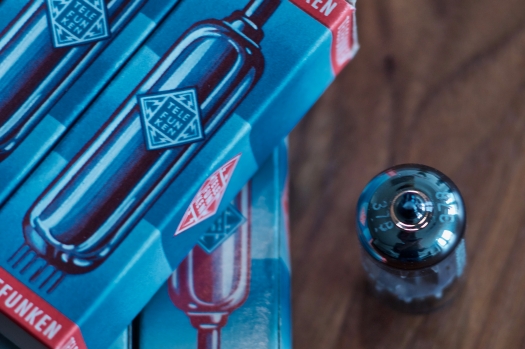
The Telefunken ECC83 is one of the most important tubes in its class – maybe the most important one. It was made in the Telefunken plant in Berlin – and has some distinctive marks which we have to talk about later. The Telefunken ECC83 is maybe the one and only tube in the ECC83/12AX7 range, which behaves is such a neutral way with its sound characteristic, that we are able to hear the quality of a given circuit. That makes this tube for some of us boring – you plug a Telefunken ECC83 into a line stage and the big miracle you will have with a Mullard, Amperex, or RCA Black Plates is seemingly missing. But that is just half of the whole story. A Telefunken ECC83 smooth plates has not the typical shining light to any frequency range or a special dynamic behaviour in the spectrum – nor has it any obvious coloration, but it has one of the most complex midband abilities of all ECC83/12AX7 tubes. You will get a highly neutral ultra complex tube sound, a sound, which needs your attention – it is not a sound were you can read a book, while listening to some music. A Telefunken ECC83 sucks you into the music – and it challanges you.
Together with its neutral full range sound, you will also get an outstanding quality in reproducing recorded space – the smooth Plates Telefunken will render the slightest amount of reflections once captured by the microphones. If you put the RCA Living Stereo with Haifetz´s Interpretation of Sibelius Violin Concerto D minor Op.47 on the platter of your turntable, than you will recoginze after the first movement – it´s all about tone. Hot and cold shivers coming over you while listening to this violin tone – reproduced with a Telefunken ECC83 smooth plates it is so frightening real, that you nearly can touch the instrument. The ability to show the whole spectrum nearly uncoloured and especially the complex midband, makes this concert a very intense experience! The smooth plates Telefunken ECC83 is one of the biggest legends in the ECC83 class of tubes and it´s status there is completely justified!
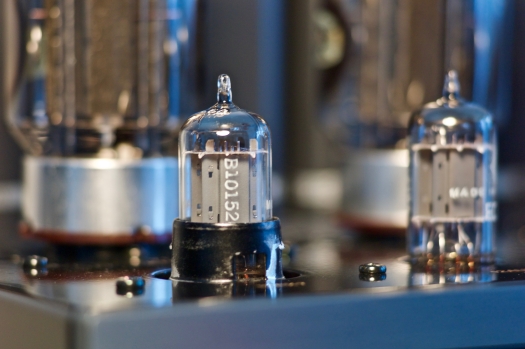
A trip to the past
The Telefunken ECC83 was used in countless legendary amplifiers of the audio or recording industry, it helped a lot of companies to gain their specific sound, which we adore even today. To name just a view….what happens, if you throw out all 6 Telefunken ECC83 of a Marantz 7C preamplifier – what if you do that with a Mcintosh C22 or with a Telefunken V72 microphone preamp??? Marantz and Mcintosh are more or less the inventors of what we call today High End – and both companies used wherever it made sense at their 12AX7 positions Telefunken ECC83 tubes. The whole US hifi scene in those years used them, Fisher, Scott, Harman Kardon and so on….sometimes they got from Telefunken tubes with their brandname printed on the glass – so it might be possible, that you have seen Telefunken tubes with Fisher and Rogers as also Mcintosh logos on their glass. As Germany was forbidden directly after the second world war to build any arms, the recovered German tube industry concentrated on civil usage of vacuum tubes and one of those fields was the reproduction of sound. Maybe that´s the miracles behind the sound of a Telefunken ECC83. Telefunken had not to deal with constructive details imperative, if their tubes were used in supersonic jet fighters or bombers which can fly at the border of the stratosphere. Strangely enough, the Telefunken is inspite of their civil purpose, a very rugged construction.
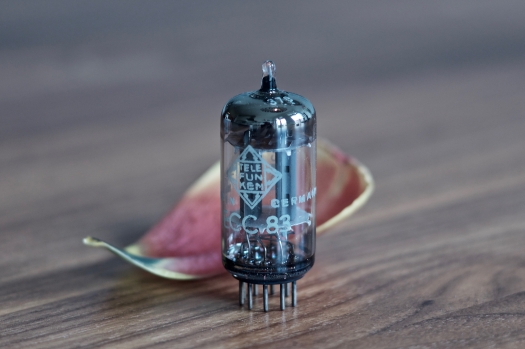
What about noise?
The smooth Plates are one of the very rare tubes which have nearly no problems with noise, nor have tey any tendency to get microphonic. Both attributes make them predestined for the use in very sensitive applications, as we will find them in phono and pre amplification stages of our sound reproduction systems. Imagine a phono stage constructed with two gain stages which will amplify the signal up to 40db – every bit of microphonic behaviour of a tube will cause an earthshaking noise coming out of your speakers. Once you reached a certain quality level of vinyl reproduction – it is the signal to noise ratio, which divides the boys from the man. As blacker the background will be, as much details and recorded space you will get – any tube hiss will weaken the ability to show the dimension in space of the recording. In a phono stage a tube can´t be quiet enough – and with the Telefunken ECC83 smooth Plates we can achieve a level of quietness no one would think is possible using a vacuum tube.
How to spot the original
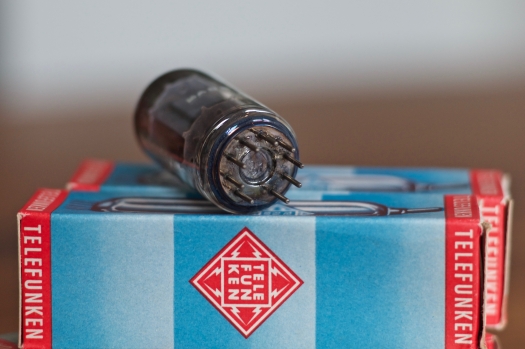
There are 5 different versions of the Telefunken ECC83 in existence – the oldest ones are called ribbed plates. The anode plates of this tubes have on their flat sides a certain pattern, which could be described as a ladder – or ribs – which gave them their name.
The smooth plates share 4 different variations – all of them differ in the numbers and positions of the holes at the side of the plates – and of course the smooth plates misses the ladder structure on their anode plates – which made them – the smooth plates!
Type 1 of the smooth plates have two rectangular holes symmetrical arranged on top and bottom auf their plates structure.
Type 2 has 4 rectangular holes at the side of their plate structure.
Type 3 has 3 rectangular holes on the side of the plate structure.
Type 4 has again 2 rectangular holes in the plate structure – but this time the holes are more centered – not as far away from each other as it is the case with type 1.
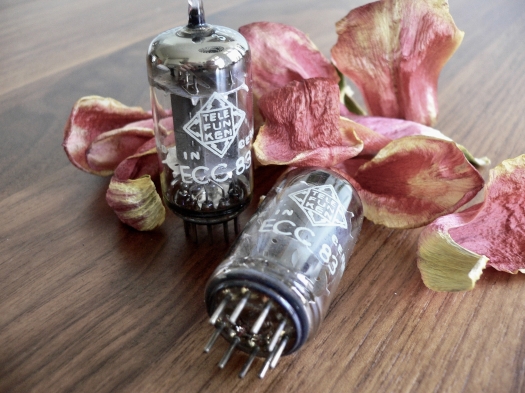
All original Telefunken small signal tubes have the diamond logo at the bottom of the glass between the contact pins – that is more important as we might think – because at the end of the tube era Telefunken stopped making their own tubes and sold re labeled tubes from the east german supplier RFT. Those RFT – “Telefunken” banded Tubes do not have the diamond logo between their pis. The great thing is – no one can fake this sign in the bottom of the tube – because it is a structure casted in the glass.
All Telefunken ECC83 have a code on the opposite side of their logo, which begins always with a capital B – which stands for the plant in Berlin/Germany. Telefunken had also a plant in Ulm/Germany, were they made all the power tubes and their special high grade signal tubes(Telefunken “S class”) – in such a case there will be a capital U at the beginning of the code.
The Logo itself changed over the years – very old ribbed plates Telefunken had a small diamond shaped Telefunken logo printed on the glass – later dated smooth plates have the more common large and thinner printed logo.
On the left and right side at the bottom of the logo you will find the writing “Made In”…………”Germany”. At the bottom of the tube you will find the type – in this case ECC83. If the tube was made for export purposes, there will be both type names – the international /US type 12AX7 and the European type name ECC83 separated through a slash.
Some Telefunken ECC83 have numbers, normally three digits, on their getter mirror on top of the tube – this was a special numbering of internal batch matching processes.
If the customer needed special selected tubes, as we will find them in medical or industrial applications, there might be a coloured tip – mostly in red or blue on top of the tube.
Some special grade Telefunken ECC83 have a bank wrapper around their glass with selection informations and names of the company for which they were made – like Tectronics for example.
And there were also Telefunken ECC83 tubes, which were made for the German Post and telegraphic applications – those have in addition to their normal logo a coloured code around the glas. I have such a pair with a red code index for telegraphic applications – but there might be also yellow codes or other coloured codes as well.
All Telefunken ECC83 are long plate types – Telefunken never changed that construction detail, as most of the other tube suppliers did at the beginning of 1960. They all have a round getter ring fixed with one getter support rod, and they should have, if they are in good shape, a shiny silver coloured getter flash. The glass on the getter dome changed over the years – the oldest smooth plates and ribbed plates have 4 segments on their dome – newer examples have a smooth glass dome.
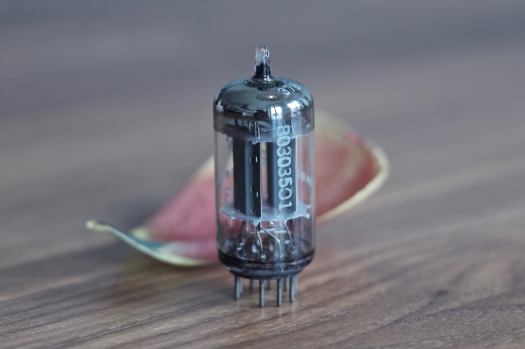
In comparison
A lot of electro technical engineers deny that there will be a sound variation between different tube brands sharing the same category like in our case the ECC83 family. They claim, that if two tubes share the same measurable data determined with a tube tester, and have the same internal resistance, than both tubes should sound equal.
As I am an audio engineer myself – I am far away from believing in Voodoo, but I must say that the sound differences between different tube brands in one given class are dramatic. A Mullard ECC83 long plates, square getter, wrinkeled glass (MC1) sounds completely different, than a Telefunken ECC83 smooth plates – soon we will discuss that more in depth.
In this case I wanted to know how a modern tube would perform in terms of sound quality against an old Telefunken ECC83. So I did some investigation at the internet to inform myself of the possibly best modern 12AX7 and got as many nominees as there are tubes on the market – but one specific tube stood out of the mass – that was the New Sensor made 12AX7 Gold Lion.
I bought a triplet of those, perfectly matched from a well known tube supplier in Germany and wanted to compare them with a equally good matched triplet of the legendary Telefunken ECC83 smooth plates type 1 with equal production codes.
As we all know, tube rolling is not a game were we can directly compare the sound of two different tubes – because we have to switch the amp of, we have to wait till the tubes cool down before we can pull them out and plug in a new set.
In the professional sound engineering world, we claim, that our memory dealing with sound will be fooled after 30 seconds – so I decided such a comparison has to be done in a better way. I decided to record the music rendered by the two different tube settings, using a professional 24bit, 192Khz digital hard disc recording system.
After I finished recording of 4 different types of music using the exactly same records, the same cartridge, same turntable, same cabling – everything being as equal as possible, I used a normalize algorhythm to bring both files at the exact same gain level to get rid of eventually existent gain differences – and listened for a couple of days to the recorded files via headphones and via my Quad ESL 57 and a pair of vintage Chartwell 1 LS3/5a. Later in the test procedere I made blind tests with both tube settings.
And what was the outcome???
In comparison to the Telefunken the most obvious impression you will get with the Gold Lion 12AX7 is a more pronounced bass – it seems to gs a little bit deeper and had a greater sense of dynamic, which gave the bass range a greater impact.
On the other side of the audio band you get the impression the Gold Lion has more sparkling treble with a pronounced roll off in the highest range of the frequencies. This character of the Gold Lion 12AX7 has its origin in a compressed midband – which makes the bass frequencies stand out – as also the treble spectrum. It is the typical – “hello – I am a great HiFi sound” tube character, which so many people fall for it.
With the treble character it is not so easy to describe the difference. An old audio engineer rule says, high frequencies mask lower frequencies – if you cut of the highest spectrum, you get a more pronounced presence in your sound. And that was exactly the case with the Gold Lion 12AX7 – the frequency range was comparable to some MP3 files, were you will not find much signal anymore above 15Khz – but in spite of sounding dark – you will get the impression of more presence. The Telefunken had the complete spectrum – and this is the reason why a vocal does not jump on you – it is placed were it belongs. The Gold Lion made the presence of the treble more pronounced more sexy but it lacks a lot at the absolute top end of the audio spectrum. If you listen to a singer songwriter track it might be nice, but if your next music sample is some Jazz with pronounced cymbal work, you will recognize that something is missing. Also the compressed midband and the pronounced presenc could make the Gold Lion sounding harsh – because all the smoothness of a balanced tone is gone – what is left is an unbalanced sound which should impress you in the first instance. In the area of rendering recorded space the Telefunken could jump over the Gold Lion – it was no comparison – the New Sensor construction sounded flat and two dimensional. The Gold Lion was simpler – more easy to listen to, it draws less attention to the details, less space, less midband accuracy and a kind of loudness curve was detected. The dynamic abilities of both tubes were more than obvious – the Gold lion compressed the midband from 350hz – 1,5khz while the Telefunken sounded completely open in this range.You will get with a recorded violin the whole gestalt of the instrument – every nuance of it was there with the Telefunken ECC83 while the Gold Lion made it more simple, more easy listening.
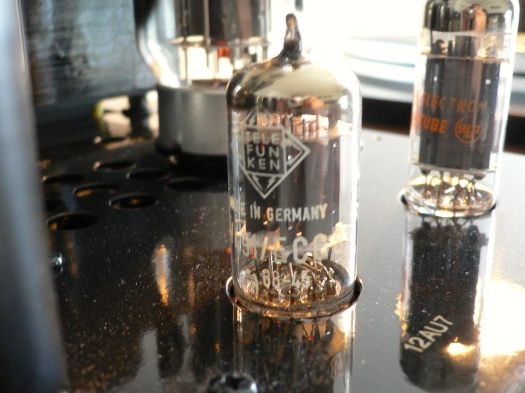
Prices and supply
A Gold Lion 12AX7 costs us with a good matching process around 50,-, the Telefunken ECC83 will set you back around 80 – 100,- – so it is much more expensive. But – you payed a lot more money for your phono stage, your cartridge and your tonearm, as also the turntable itself – if you want to keep the signal chain as neutral and as open for what you feed in it, than there is no other way as to bite the bullet and get some good quality NOS tubes!
And do it now – because every year the things get more and more expensive – we are probably the last generation, who will be able to consume the fruits of a technology obviously forgotten in our modern times. We face much larger demand of NOS tubes than the market can deliver – a proved sign are raising prices. The same Telefunken ECC83 costs 8 years ago 50,- exactly what you have to pay today for a Gold Lion 12AX7 – and I thought that was really expensive in those years.
If you spent such an amount of money for a single tube, you should be certain to get good quality – so I am not a big fan of countless ebay auctions with no tube tester is involved or tube testing equipment is used, were you can not work with the data published at the auction.
Buy from trusted sources – pay a little bit more and forget the story of the dead grandfather with a stach full of brad new Telefunken without any sign of a label on the glass or dark getter mirrors. At the end such an expensive Telefunken ECC83 could be also the better decision in the long term, because such tubes will be durable around 10 000 hours – during that period of time it might be, that your third generation of Gold Lion tubes will be necessary.
Great listening
E. Strauss
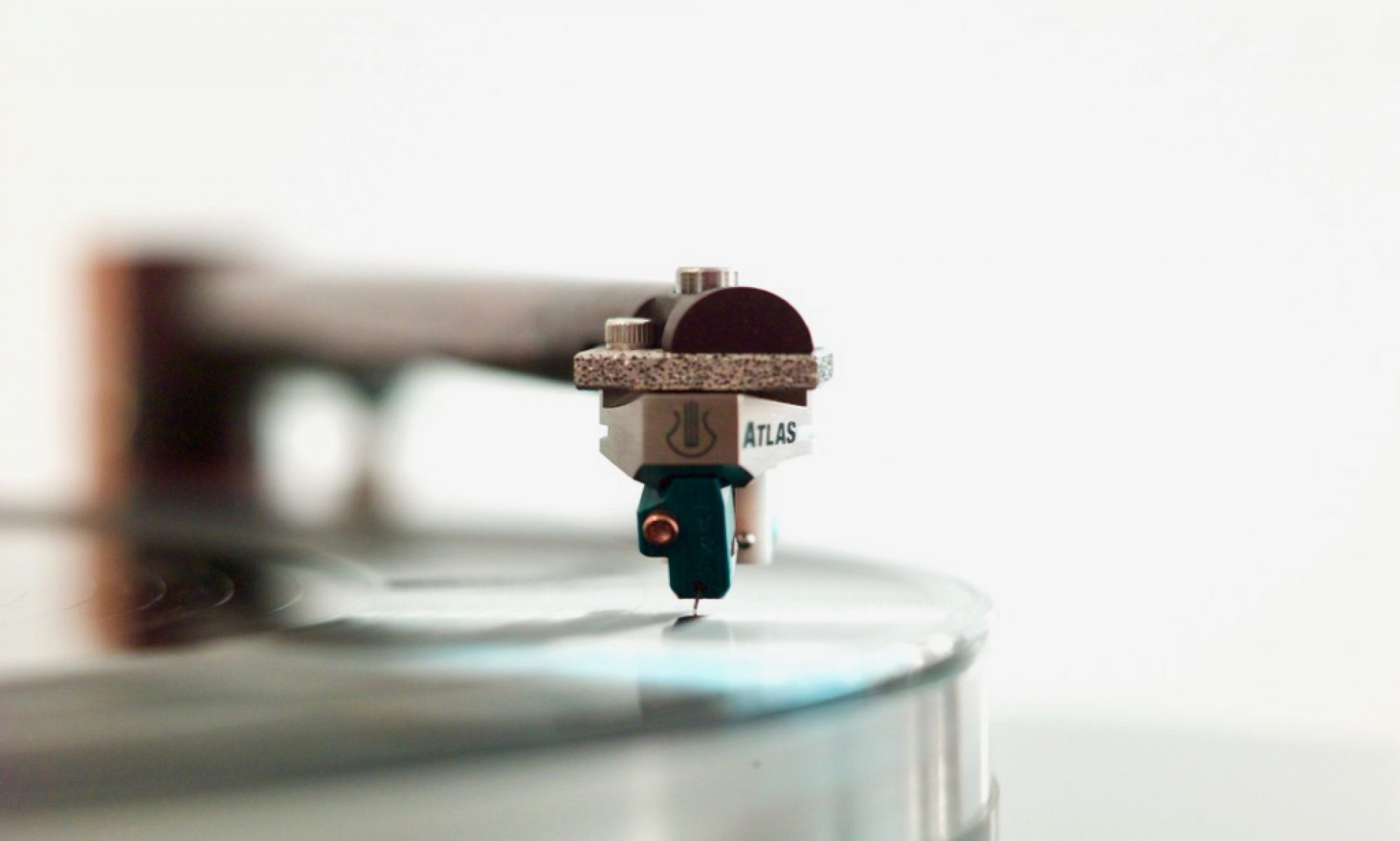

Excellent review and recommendation
LikeLike
as a live acoustic singing guitarist who works 5 nights per week, month after month, I LIVE with my sound and it is from two telefunken tubes. I have over 20 assorted 12ax7s and always return to the telefunken. You nailed the reason! it’s the human VOICE that we ultimately connect with, and that frequency range is where it all happens…I like to say bass and treble are like frosting on the cake!
LikeLike
fantastic depth of knowledge, that can only come for a solid technical background combined with years of listening experience. thank you herr strauss for this enriched article that just puts the TELEFUNKEN ECC83 where it belongs…the heart of any good neutral music system, and as the king of the small tubes!!
LikeLike
Do you think all Tele types 1 – 4 will sound the same? No reason to pay more for a different type or year than the others. I have about 12 Tele Ecc83’s and they are all type 4 for some ironic reason.
Thank you for your insights.
LikeLike
Dear John,
as I have from all 4 types matched sets – I can not hear any sound differences….If the tubes are in good condition (NOS or near NOS) the sound is equal….
All the best
E. Strauss
LikeLike
I got 4 Telefunken ECC83 with diamond bottom. There is a number embossed inside the diamond. One is 2, another is 16.
What is the meaning of these numbers? Manufacture dates ??
LikeLike
Dear Jack
….the date code is the number on the backside (opposite side of the Telefunken Logo – starting with a capital B). I need a picture to answer your specific question….
Telefunken had batch numbers on their getter dome – but you are describing a number on the front side…right????
So – if you can provide a photo I can possibly help – my email can be found on my blog side…
All the best
E. Strauss
LikeLike
Hello Mr. Strauss
I purchased 2 telefunken ECC83’s.
One tube has “made in western Germany” printed and the other (looks newer) says only “made in Germany”.
How do I tell if they are the real deal?
Do you have an email address I can send you photos? Thanks much
LikeLike
Dear Stan,
the “real deal” has a diamond shaped sign between the tube pins. This is manufactures into the glas, so it cannot be “faked” easily. Hope that helps. All the best, E. Strauss
LikeLike
In the etched Diamond shape between the pins, I see a number. What does the number mean?
LikeLike
Hi Stan,
these etched numbers between the pins are usual for original Telefunken tubes. These are batch codes, were I cannot tell you, what they mean. Sometimes you have them also printed in white on the getter flush at the top of the glas dome. Have much fun with these great tubes.
LikeLike
Fantastic article, thanks so much for publishing information that is so helpful when new to the tube amp hifi world!
LikeLike
Fantastic article on the telefunken, I have a pair of quad 11 amplifiers fully restored along with a quad 22 control unit driving a pair of ESL 57’s. There is currently a pair of 1960s halo getter mullard ecc83 in the 22. I have my eye on a pair of low hours Fisher telefunken ecc83 at the moment. Would love to give these a try in my quads. They do have the diamonds on the bottom . I would love your input on this.
LikeLike
Fisher got a lot of Telefunken – and labeled them with their script. More important is, that the tube should be NOS or close to NOS. Most of what you find online about the Telefunken ECC83 is explainable die to heavily used tubes. Some people claim, that the TFK ECC83 is thin sounding, analytic, which bass shy low end and no real dynamic. That is totally nonsense – in fact there are only very few ECC83 with the kind of ultra dynamic a Telefunken has (a NOS one) and a super fast, agile bass, which is the opposite of Mullard – so the emphasis at the upper Bass. The magic is in the mid frequencies – were I know exactly NO other tube, which that kind of neutrality and 3D imaging! – So of the Fisher TFK are NOS or close to NOS – give it a try! All the best – Ekki
LikeLike
Thank you so much for your reply reply Ekkehard, the tubes have been tested on a recently rebuilt and calibrated Sencore TC136 where 60 is minimum good and 95 to 105 is strong to nos. The test results are
Tube one 101/101
Tube two 102/101
I think this qualifies them very strong/ close to nos
LikeLike
Dear John,
that is super good – and that is how TFK normally are – if they are not pulled out of gear which was used and on 24/7 over many, many years. Great!!!!Try them. What is also interesting – Peter Walker designed the Quad tube stuff so amazingly to match his speaker, and therefor you should first try to get EXACTLY the tubes, which were originally supplied with them. I am no expert on the preamp – I think it is or was the weakest point in this system – but that is maybe just me. But I know the Quad II mono blocks very well. I once tried super amazing GEC CV4085 instead of the Mullard EF86 in them. In all circuits were I heard the GEC CV4085 till that point, it was one of the two best EF86 ever made (the other would be a Telefunken EF 86 or 806S). BUT – in this little KT88 mono blocks, the Mullard was the way to go. So….if we want to listen what Walker once designed – it is a good idea to start with what he thought was the optimum in terms of tubes – and I think – but that is only a guess (as I told you – I no expert in terms of the preamp) I doubt, that he used TFK ECC83….but maybe it is a good experience to try them – one of the greatest ECC83 ever made (if such things exist in tubes – because all that is highly circuit dependant). So, good luck – and much fun while listening to those tubes! All the best – Ekki
LikeLike
Cheers Ekkehard
LikeLike
Do you have experience with Tungsram ECC83? I recently discovered them (military double getter, long plates, copper rods)and the midrange/voice quality is amazing. I wonder how it compares to Telefunken.
LikeLike
The experience I have with Tungsram long plates is, that they are quite different than Telefunken – less neutral, more coloured more in the direction of Mullards….all the best – Ekki
LikeLike